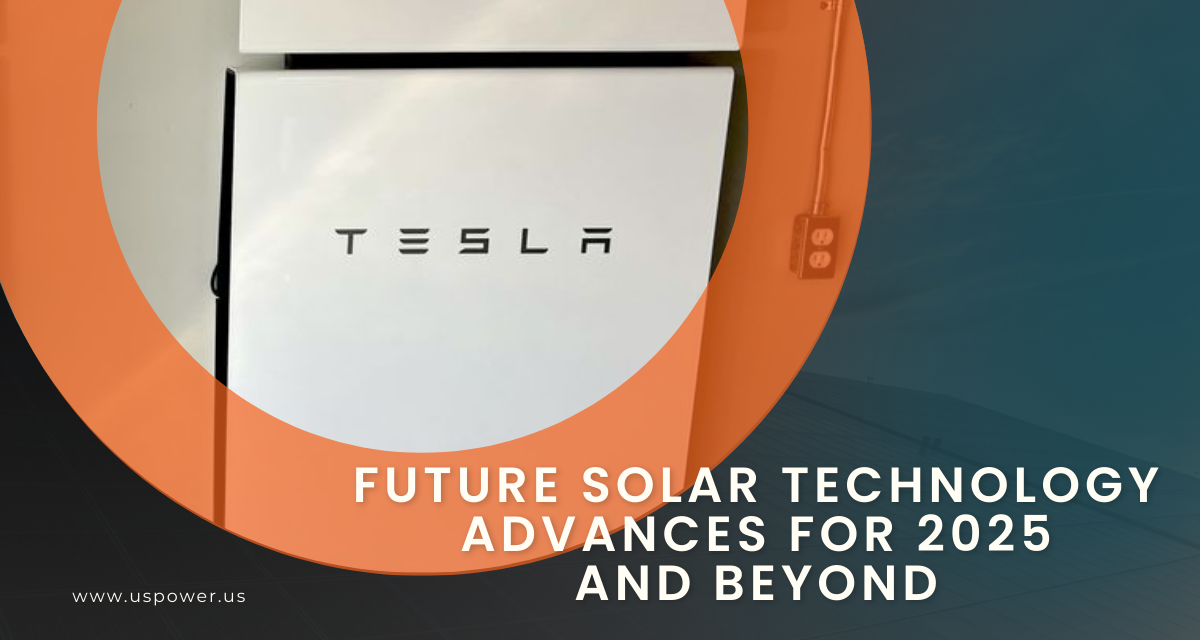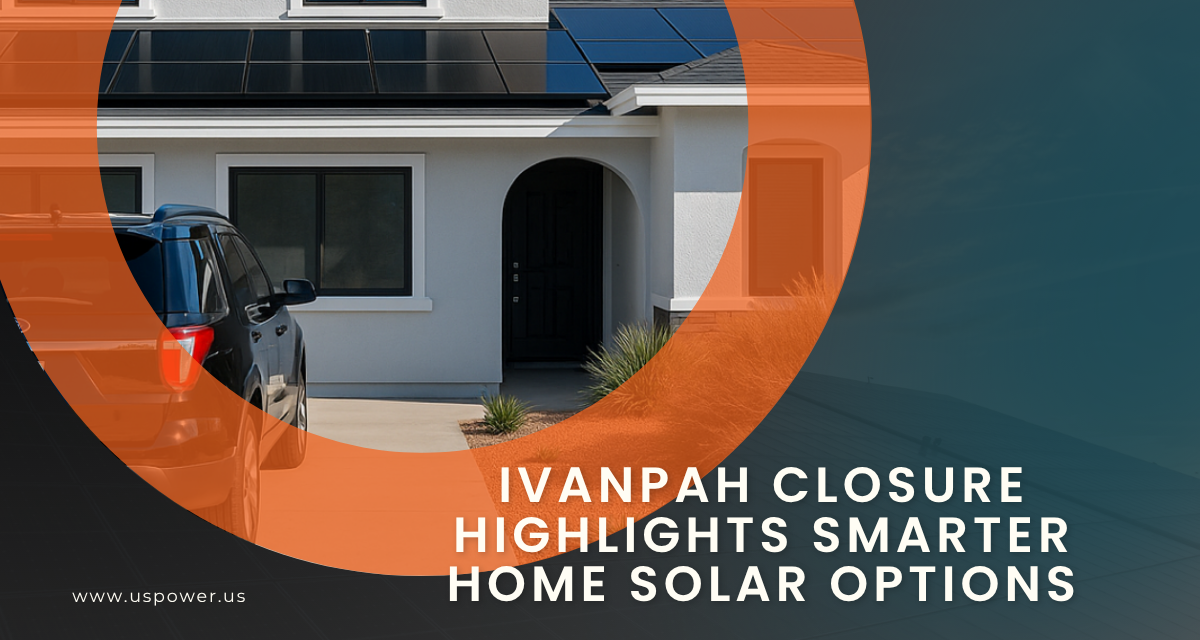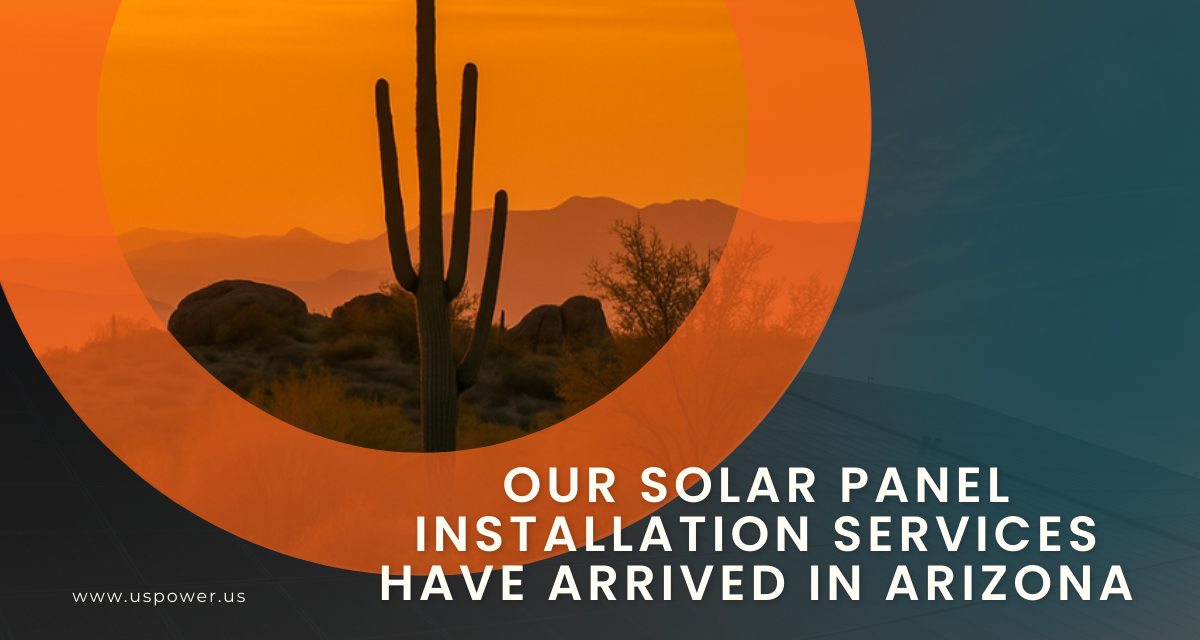Claim the 30% Federal Solar Tax Credit Before Dec 31, 2025

Solar and Roofing Advisor
Everything you need to know about claiming the 30% federal solar tax credit in 2025 — eligibility, deadlines, and how SoCal homeowners can qualify.

Southern California homeowners still have time to take advantage of one of the biggest clean energy incentives in U.S. history — the 30% Federal Solar Investment Tax Credit (ITC). This limited-time opportunity allows eligible homeowners to claim a dollar-for-dollar reduction on their federal taxes equal to 30% of their total solar installation cost.
But here’s the catch: to qualify, your system must be installed and operable by December 31, 2025. With project timelines averaging 60–90 days, and end-of-year demand expected to surge, now is the time to act.
This guide breaks down everything Southern California homeowners need to know about the 2025 solar tax credit — what qualifies, how to claim it, and how US Power can help you complete your installation on time and lock in the full benefit.
What Is the 30% Federal Solar Tax Credit?
The Federal Solar Investment Tax Credit (ITC) is a financial incentive that reduces your federal tax liability by 30% of the total eligible project cost. That includes solar panels, inverters, racking, labor, permitting, sales tax, and even required electrical work.
For example, if your solar project costs $20,000, you can receive a $6,000 federal tax credit. This isn’t a deduction — it’s a direct reduction in the taxes you owe. If your credit exceeds your annual tax bill, the unused portion rolls forward to future years until it’s fully used.
The ITC currently applies to residential solar installations completed through December 31, 2032, but the full 30% rate is guaranteed only through 2025 before scheduled step-downs begin.
Why the December 31, 2025 Deadline Matters
To qualify for the full 30%, your solar system must be installed and operable by the end of 2025. That means your panels must be in place, connected, and ready for use. While receiving “Permission to Operate” (PTO) from your utility — such as SCE or LADWP — provides the strongest proof, it’s not always required if you have clear evidence of completion (such as a final invoice, installation photos, or installer sign-off).
With solar permitting and interconnection times tightening, waiting until late 2025 could put your eligibility at risk. A typical project in Southern California takes two to three months from contract to installation — sometimes longer in high-demand seasons.
That’s why US Power encourages homeowners to begin the process early to ensure their system is operational before the cutoff.
Who Qualifies for the 30% ITC?
To be eligible for the full credit, you must meet the following criteria:
- Ownership: You must own your solar system — either through cash purchase or loan. If you lease your system or sign a power purchase agreement (PPA), the installer or leasing company receives the credit instead.
- Primary or Secondary Residence: The credit applies to systems installed at a home you live in — whether it’s your main or secondary residence — as long as it’s not primarily rented out.
- New Equipment: Only new, original-use solar equipment qualifies. Replacing an older system in full can count, but piecemeal repairs or used components do not.
- Installed by 2025: The system must be installed and operable by Dec 31, 2025 to claim the 30% rate.
Even if your credit exceeds your tax liability, you can carry it forward to future years until it’s used up — a major advantage for homeowners with moderate annual tax obligations.
What Costs Are Covered (and What Aren’t)
The 30% credit covers nearly every aspect of a solar installation project, including:
✅ Solar panels and inverters
✅ Mounting and racking hardware
✅ Wiring, trenching, and electrical panel upgrades
✅ Batteries (if 3 kWh or larger)
✅ Labor and permitting fees
✅ Developer or inspection costs
✅ Sales tax
Not covered:
❌ Routine roof repairs unrelated to solar
❌ Cleaning or maintenance services
❌ DIY tools or installation equipment
❌ Interest or financing fees
What About Battery Storage?
As of 2025, standalone battery systems now also qualify for the 30% federal credit, whether they’re installed at the same time as solar or added later. The only requirement is that the battery must have a minimum capacity of 3 kilowatt-hours (kWh).
This makes 2025 a powerful year for homeowners looking to pair solar with energy storage — allowing them to capture excess daytime energy and use it at night or during power outages. With Southern California’s growing focus on grid reliability and energy independence, installing solar plus battery storage has never made more sense.
How to Claim the Solar Tax Credit (Step-by-Step)
When your system is complete and operable, you’ll claim the 30% ITC on your 2025 federal tax return, filed in 2026. Here’s the basic process:
- Confirm eligibility. You own the system, it was installed in 2025, and you have documentation of completion.
- Complete IRS Form 5695 — this form calculates your Residential Clean Energy Credit.
- Transfer the credit amount from Form 5695 to Schedule 3, then to your main Form 1040.
- Keep records — retain all contracts, invoices, proof of installation, and photos for at least 3 years.
It’s highly recommended to consult a tax professional or CPA to ensure you maximize your benefit and correctly file all necessary forms.
Common Scenarios and Edge Cases
Here are a few common homeowner questions clarified for 2025:
- Do I need final utility approval (PTO) to qualify? Not necessarily. As long as your system is operational and you have clear documentation, you may still qualify.
- Can second homes qualify? Yes, if you use it as a personal residence for part of the year and it’s not primarily rented out.
- What about duplexes or ADUs? If you live in one unit and own the building, you can typically claim the portion of the system powering your residence.
- Can I replace an old system? A full replacement using new equipment qualifies, but simple repairs do not.
- Do EV chargers qualify? They may qualify separately under a different federal credit. However, electrical upgrades for the charger can be included if bundled with your solar project.
California Incentives That Stack With the Federal Credit
Southern California homeowners can also take advantage of state and utility incentives that stack with the federal ITC:
- Self-Generation Incentive Program (SGIP): Offers battery rebates from utilities like SCE and LADWP.
- Local rebates: Select cities and counties still provide small solar incentives or expedited permitting programs.
- Net Energy Metering (NEM 3.0): Homeowners under California’s new solar billing policy can still earn credits for sending power back to the grid — and maximize ROI with the right solar + battery setup.
By combining these incentives with the 30% ITC, many homeowners cut their overall payback period to 5–7 years, especially with premium panels like QCells available through US Power’s factory-direct pricing.
Why Choose US Power
At US Power, we help Southern California homeowners navigate every step of their solar installation — from design and permitting to activation — with transparent pricing, efficient timelines, and top-tier solar technology.
As an exclusive QCells partner, we deliver American-made, high-efficiency panels at factory-direct prices. QCells modules are among the most trusted in the industry for reliability, performance, and long-term energy yield — all backed by a 25-year product and performance warranty.
With installations across Los Angeles, Ventura, and Orange County, our local expertise ensures your project is completed before the December 31, 2025 ITC deadline, so you can lock in the full 30% savings and enjoy decades of clean, cost-effective energy.
Quick Homeowner Action Plan
Here’s how to make sure you don’t miss out on the 30% solar tax credit:
- This week: Request a free solar quote from US Power and confirm installation availability before the 2025 deadline.
- Next 30 days: Sign your solar contract and secure your spot on the installation schedule.
- Before Dec 31, 2025: Complete installation and obtain proof of operability.
- Tax season 2026: File Form 5695 with your 2025 tax return to claim your credit.
The Bottom Line: Don’t Wait Until It’s Too Late
The 30% Federal Solar Tax Credit remains one of the most powerful ways to make solar energy affordable — but it won’t last forever. With project timelines tightening and installation crews booking up fast toward year-end, the best time to act is now.
Partner with US Power, your trusted Southern California solar installer, to secure your place before the Dec 31, 2025 deadline. We’ll handle every step of the process — design, permitting, and installation — so you can lock in your savings and start generating your own clean energy worry-free.
Schedule your free consultation today and guarantee your eligibility for the full 30% solar tax credit before time runs out.
Artículos relacionados
Nuestros blogs relacionados
Emerging solar tech in 2025 offers higher efficiency, smarter storage, and savings.
Ivanpah shuts down early—see why PV solar is the smarter choice for SoCal homes.
Arizona homeowners can now enjoy our expert solar panel installation services.
Nuestros socios de marcas de energía solar y techos








Empoderamos a las comunidades y las empresas para que aprovechen las energías limpias y renovables energía solar soluciones que impulsan el crecimiento sostenible.
Derechos de autor © 2025 US POWER | Energía solar y techosUS Power - Axia by QCells. All Rights Reserved.
La privacidad es importante para nosotros, por lo que tiene la opción de deshabilitar ciertos tipos de almacenamiento que pueden no ser necesarios para el funcionamiento básico del sitio web. El bloqueo de categorías puede afectar a su experiencia en el sitio web.
Imprescindible
Estos elementos son necesarios para habilitar la funcionalidad básica del sitio web.
Personalización
Estos elementos permiten que el sitio web recuerde las elecciones que ha realizado (como el nombre de usuario, el idioma o la región en la que se encuentra) y proporcionan funciones mejoradas y más personales.
Mercadeo
Estos artículos se utilizan para ofrecer publicidad que sea más relevante para usted y sus intereses.
Analítica
Estos elementos ayudan al operador del sitio web a comprender cómo funciona su sitio web, cómo interactúan los visitantes con el sitio y si puede haber problemas técnicos.
Nosotros y nuestros socios externos utilizamos cookies y otras tecnologías para mejorar y rastrear su experiencia en este sitio, realizar análisis y personalizar el marketing para usted. Al usar el sitio, aceptas que usemos estas tecnologías, incluido el registro y el monitoreo de tus interacciones con el sitio.
¡Obtenga una estimación solar instantánea usando el satélite!










